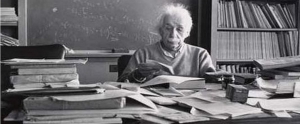EnTeam games are set up with multiple routes to the answer. Rather than a traditional lecture-based classroom format, EnTeam measures cooperation in collaborative games. Open-ended questions are asked of students that force them to innovate, strategize, assess their progress, and then try again.
Here are some simple ways to make a mess — and provide the soil for a rich learning environment!
1 Provide opportunity for failure
Ensure that there is a supportive learning environment. If the other students in the room are ready to tear apart a failure or they are unwilling to hear out a student’s insights from failure, you have some work to do. Often, pulling out “golden nuggets” from a failed attempt or strategy can propel the entire class to greater success while bolstering the ego of the low-performing group.
2 Use Essential questions
In EnTeam’s Higher-Order Thinking Bowls, all of the schools gathering together have based their curricula around the same essential question(s). All students gathering together from diverse schools are thus speaking a common educational language. Failures and success make perfect sense to all participants and much is to be gleaned by sharing educational stories. Suddenly school is cool again and students want to dig more deeply into the material.
For example: When we brought students together from different classes in a large elementary school to focus on mathematical word problems, the common game we taught the 99 4th grade students to play was called Talking Dominoes. 4th graders were excited by the fact that they could all use mathematical terms to describe the pattern and positioning of their dominoes. The teachers were happy to see their students using the words “horizontal, diagonal, and vertical” with comprehension and clarity. The 9-year-olds felt a new-found sense of power in their expanded vocabulary because it allowed them to communicate a pattern more accurately instead of holding up their hands and saying “this way” or “that way”.
3 Debrief the mess
Games provide a wonderful workshop for learning, then we have to bring home the message and make it stick. EnTeam uses 3 questions to assess and identify the learning opportunities and principles at work in the activity:
1) What happened?
(What did we learn? Why is this valuable for our understanding of the world? What principles are at work in the experience we just had?)
2) So what?
(How can I apply what I learned elsewhere? School, social relationships…)
3) Now what?
(Where do we go from here? How will you responded in future circumstances?)
Whether we are working with adults in two branches of a company who must now share resources or children from different faith-based schools, or racially diverse schools from different socioeconomic backgrounds, EnTeam’s format is the same: Form small teams of participants with each group or school represented on a team of 3 or 4 and then give them time to work out the problem for themselves. Participants in the EnTeam event are always interested in the outcomes and innovations derived from the messy discussions about the failures, and successes of their peers because of a shared experience.
So, don’t be so concerned about perfection the first time around. Give your class a chance to explore an idea more fully. They will appreciate the opportunity!


Tom Evans
How do you structure your debriefing sessions?
Ryan Judge
Pre plan some anchor questions to go back to if the debrief goes a direction you don’t want it to. First it is important to start reflection on what happened, followed by the so what? And now what?
Tom Evans
Thank you Ryan,
Yes, having “anchor” questions is a great idea. When planning events we start with essential questions and keep these in the students’ thought. Often debriefing can be tied into these essential questions as well.
How far do you allow the conversation to drift before pulling out the anchor question?
Ryan Judge
Depends on time- if we have time some great learning can come from those tangents. If time is ticking I will allow 2-3 people to speak then ask the next question. Just make sure it’s a different person speaking each time.
Tom Evans
Thank you Ryan,
One thing EnTeam has taught me is just as you said, pre-plan a few questions to provide an anchor point, and then have each of the small groups in a class debrief those questions. It is difficult to maintain order in the traditional sense :-), but the students respect this method and get more and more efficient at this sharing.
Happy debriefing!